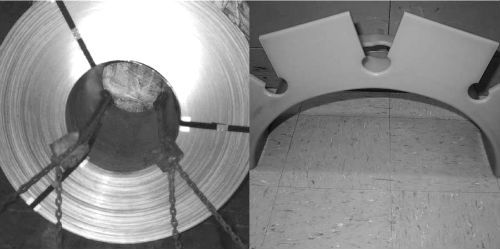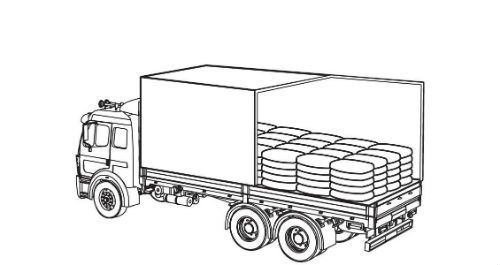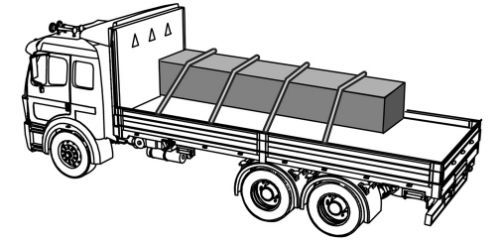Review Questions - Click On The Picture To Begin...

A device placed between the deck of a vehicle and car or between articles of cargo, intended to provide greater friction than exists naturally between these surfaces is:
- A cleat.
- A friction mat.
- A chock.
- Void filler.
Quote From The CDL Manual:
Friction mat:
A device placed between the deck of a vehicle and car or between articles of cargo, intended to provide greater friction than exists naturally between these surfaces.
Next
Aggregate Working Load Limit is defined as:
- The maximum weight of a load of rocks that a securement device can withstand.
- The summation of the working load limits or restraining capacity of all devices used to secure an article on a vehicle.
- The maximum load that may be applied to a component of a cargo securement system during normal service, usually assigned by the manufacturer of the component.
- A combination of securing devices which form an assembly that attaches cargo to, or restrains cargo on, a vehicle or trailer, and is attached to anchor point(s).
Quote From The CDL Manual:
Aggregate Working Load Limit:
The summation of the working load limits or restraining capacity of all devices used to secure an article on a vehicle.
Prev
Next
Which of the following is not a requirement of wood used as blocking or bracing?
- It should be properly seasoned.
- It should be free of decay and structural defects.
- It should be painted.
- Hardwood is recommended.
Quote From The CDL Manual:
If wood is used:
- Hardwood is recommended.
- It should be properly seasoned.
- It should be free from rot or decay, knots, knotholes, and splits.
Prev
Next
A sided vehicle containing cargo weighing 35,980 lbs must be able to withstand a rearward force of at least:
- 36,000 lbs
- 28,784 lbs
- 17,990 lbs
- 10,000 lbs
Quote From The CDL Manual:
Note: If the cargo is contained in a sided vehicle, the vehicle structure MUST be strong enough to withstand the forces described earlier.
- Forward force: 0.8 g (80%)
- Rearward force: 0.5.g (50%)
- Sideways force: 0.5 g (50%)
Prev
Next
If the cargo is fully contained in a sided vehicle, what is the minimum requirement for withstanding sideways force?
- 0.2g (20% of cargo weight)
- 0.5g (50% of cargo weight)
- 0.8g (80% of cargo weight)
- 0.7g (70% of cargo weight)
Quote From The CDL Manual:
Note: If the cargo is contained in a sided vehicle, the vehicle structure MUST be strong enough to withstand the forces described earlier.
- Forward force: 0.8 g (80%)
- Rearward force: 0.5.g (50%)
- Sideways force: 0.5 g (50%)
Prev
Finish
Please select an option







 Related Cargo Securement Terms That Every Driver Should Know:
Related Cargo Securement Terms That Every Driver Should Know: 



 TT On Facebook
TT On Facebook